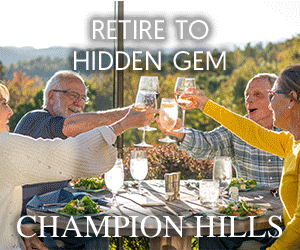Kyle Franz has worked as an understudy for some of the top architects in the business – Tom Doak, Bill Coore, Ben Crenshaw and Gil Hanse – and on some of the best projects – the Pinehurst No. 2 restoration and currently the 2016 Olympic course in Rio de Janeiro – prior to getting his first real big break in the business this year at Mid Pines Inn and Golf Club.
The 31-year-old Franz is currently putting the final touches on a restoration of the 1921 Donald Ross classic in Southern Pines, which is his first solo project. Mid Pines was on a tight budget, so the young architect waived his design fee to help accentuate his work in the sandy soil.
“I felt like it was better to put the money into the golf course, trying to make it great,” Franz said. “Waiving my design fee gave me extra money to do what I wanted to on the course. It was more of a value to me on my resume at this point of my career than the money.”
From early indications, Franz made an intelligent business move. The play among members and resort guests had swung to about 70 percent in favor of Pine Needles over Mid Pines in recent years. The accomplishments of Franz could transpose those figures once the final green work is completed this summer.
Franz cut down 300-400 tall pines to open up the course’s corridors, started digging in the sand to make some dramatic flashes and massive waste areas that Ross once displayed at 6,528-yard Mid Pines and transplanted wire grass from on the property for that “old feel” look.
“There is a bunch of cool looking holes and some cool looking shots out there now,” said Kelly Miller, longtime president of Pine Needles and Mid Pines resorts. “You compare it to the old 1921 layout and what it is now, and it’s pretty close.”
Exactly zero dirt or sand was trucked onto the 250-acre property, and right before his eyes Miller was presented with virtually a new golf course for less than $1 million.
“That’s what makes a lot of this the fun,” Franz said. “A lot of it is already there and you sort of visualize putting the pieces back together again. I really like that about restorations and especially putting this style of bunkering back together again. There are some of them that have been changed along the way, like the left side of the 13th green that had been turned into a perfect circle. All I did was get back in there with the machine, threw around a bit of the dirt and played a shell game to get it back to where it was. It all balanced out perfectly. It’s kind of fun to play archeologist to a degree, kind of tinkering and throwing things back together again.”
Prior to his Mid Pines restoration, Franz was in charge of most of the bunker and wire grass work on the Pinehurst No. 2 project under the direction of Coore and Crenshaw in August 2010. That means Franz has been in the North Carolina Sandhills – more than 2,000 miles away from his home in Oregon – for a total of 16 months.
And word of the work by the up-and-coming architect spread quickly. Franz has begun tinkering with some bunker work at nearby Deercroft, and has had informal talks with several other courses in the Pinehurst area.
“I certainly hope Mid Pines is a big break for me in the business,” said Franz, who begged Doak for a job at Pacific Dunes as a 19-year-old. “We’re at least five years away from getting any more heavy golf course construction in the United States. We would be better off if a lot of the efforts of the most talented people in the business were put into making the golf courses we already have better before we put more capital on the line in an economy that’s not necessarily built for it.”
Franz fell in love with the work of Ross during the No. 2 project … and one thing led to another.
“Pinehurst No. 2 is very famous for its putting surfaces, which is very justified; the style Ross created out there, you see the same things at Mid Pines,” Franz said. “The slightly crowned greens make for such fascinating recovery play, there are so many dips and hollows and interesting shots around the edges. What is really fascinating about it is you have to learn when and when not to miss a hole on a certain location – and it can change on each hole day to day. I think they are the best greens in the world.
“Ross was really intelligent and worked in the field very hard, creating a bunch of amazing shots that make you think about what the heck you’re doing when you’re playing into those greens. And when you combine it with such a pretty natural landscape with a mixture of sand and wire grass and pine straw, it makes for some really interesting recovery play. You get the complete gambit of lies.”
Mid Pines Resort is better known as the sister course – actually situated across the street –from the more famous Pine Needles Resort, which has hosted three U.S. Women’s Opens and is the home of famed teacher Peggy Kirk Bell.
Facing greens that were last redone in the 1960s and some brutal North Carolina summers, Miller knew he had to pull the trigger sooner than later on his struggling putting surfaces at Mid Pines. He met Franz at a cocktail party a few years ago while the young architect was working up the road at Pinehurst No. 2.
What Miller didn’t know was that Franz had been sifting through file-after-file in the Tufts Archives in his spare time, waiting for the right moment to re-approach Miller about his plan to not only work on the greens but to restore Mid Pines to its original Ross ideals.
“Kyle came in and quite honestly wowed me,” Miller said. “He spent a lot of time researching the course. I’ll give him a lot of credit, because it was a surprise. We literally started walking the course and he would say, ‘This is what Ross would have done.’ He’s a huge student of Ross. I kind of became enamored with his knowledge and what he wanted to do. So, I said ‘OK, let’s give him a shot.”’
After work on the perimeter of the course over the winter and spring months, adding back numerous expansive sandy areas with wire grass and native pine straw, Franz began the process on May 21 of restoring the original Ross greens that were altered due to the dreaded riding mower over a 50-year period.
“The 9th green has been changed completely over the last 20 years, so we’re taking all of the grass off of it and putting it back the best we can,” he said. “The green on No. 8 also had some fairly substantial changes because we can see it in the photography. I’m trimming off a large section of the back of the green so we can get the same sort of feel and look as Ross had there. On the rest the greens have shrunk in a lot of places some 6-8 feet. In other words, we’re taking out some of the fat.”
Mid Pines is expected to be closed for a 10-week period, re-opening sometime in early August.
“I have learned so much more about this golf course from Kyle,” said Miller. “He’s got this book and would whip it out and say, ‘You can see where Ross had this or that and this is the way he wanted it.’ He was great about the history, but where I’ll give Kyle a lot of the credit is he’s out there and he’s looking and watching golfers and he’s seeing where the college kids are hitting it. On No. 18, we added a bunker and he was asking the kids if we did this what would you do off the tee. You want to restore it to what Ross’ intensions were, but you know if Ross was alive today he would tinkering with it. Kyle watches, observes and listens.”

















